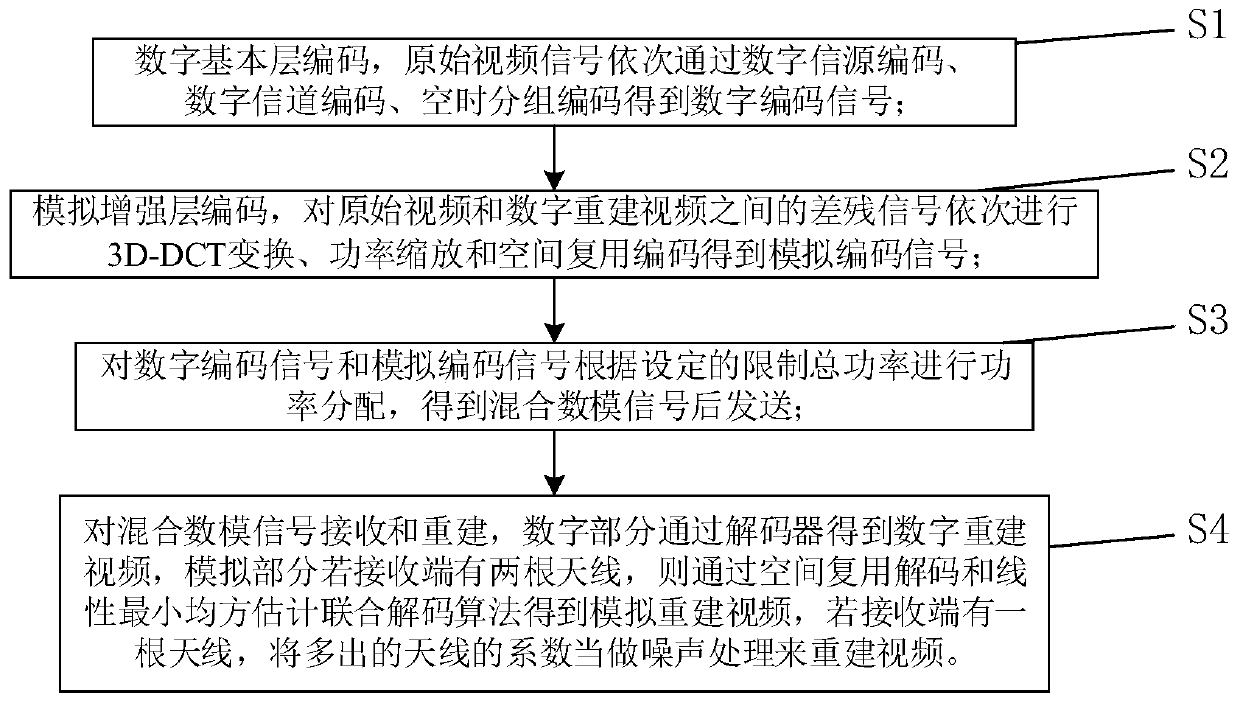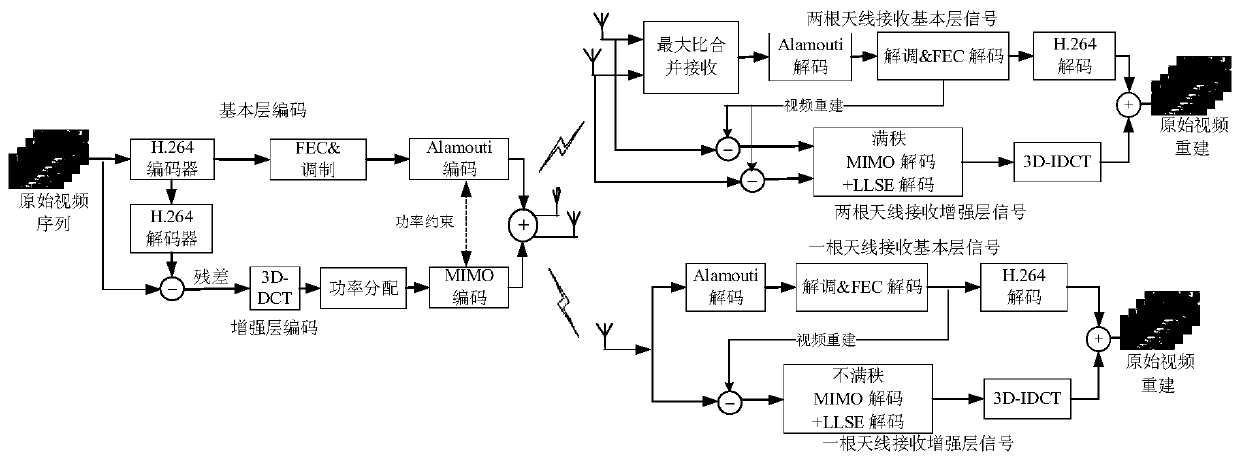A Hybrid Digital-Analog Video Transmission Method for Antenna Heterogeneous Scenarios
A technology of video transmission and mixed number, applied in the field of video transmission, can solve the problems of poor pseudo-analog transmission efficiency and unsatisfactory performance, and achieve the effect of quality scalability, effective trade-off, and coding efficiency.
Active Publication Date: 2019-10-01
TONGJI UNIV
View PDF4 Cites 0 Cited by
- Summary
- Abstract
- Description
- Claims
- Application Information
AI Technical Summary
Problems solved by technology
Due to the removal of entropy coding, pseudo-analog transmission is slightly less efficient than traditional digital video transmission systems, and SoftCast does not perform well in poor channel conditions compared to other classic digital video coding schemes
Method used
the structure of the environmentally friendly knitted fabric provided by the present invention; figure 2 Flow chart of the yarn wrapping machine for environmentally friendly knitted fabrics and storage devices; image 3 Is the parameter map of the yarn covering machine
View moreImage
Smart Image Click on the blue labels to locate them in the text.
Smart ImageViewing Examples
Examples
Experimental program
Comparison scheme
Effect test
Embodiment 1
Embodiment 2
the structure of the environmentally friendly knitted fabric provided by the present invention; figure 2 Flow chart of the yarn wrapping machine for environmentally friendly knitted fabrics and storage devices; image 3 Is the parameter map of the yarn covering machine
Login to View More PUM
 Login to View More
Login to View More Abstract
The invention relates to a mixed digital-analog video transmission method for an antenna isomerism scenario. The method comprises a video coding and sending process, and a video receiving and reconstruction process, wherein at a sending end, transmission of a digital part obtains diversity gain provided by a base station through space-time coding, and all terminal users with antenna isomerism can successfully decode the digital part; for an analog part, residuals of a digital coder undergo 3D-DCT conversion, and obtained analog coded signals are sent through spatial multiplexing; at a receiving end, for the digital part of signals, a digital reconstructed video is obtained through a decoder; and for the analog part of the signals, an analog reconstructed video is obtained through spatial multiplexing decoding and the linear minimum mean square estimation joint decoding algorithm if the receiving end is provided with two antennas, and video reconstruction is carried out with excessive antenna coefficients processed as noises if the receiving end is provided with one antenna. Compared with the prior art, the method provided by the invention has the advantage that seamless self-adaptation for multi-antenna video transmission is achieved.
Description
technical field The present invention relates to a video transmission technology, in particular to a hybrid digital-analog video transmission method used in a heterogeneous antenna scenario. Background technique In a wireless broadcasting scenario, a base station (Base Station, BS) is usually equipped with multiple antennas, and different end users may be equipped with different numbers of antennas. The current multi-antenna technology can only allow the receiving end to be designed according to the minimum number of receiving antennas, which makes it impossible for receiving devices with more antennas to obtain any performance gain. Although analog video transmission can solve the heterogeneity of signal-to-noise ratio, it cannot solve the heterogeneity of the number of antennas due to the limitation of space-time code. The performance of broadcast systems is usually bounded by worst-case scenarios to guarantee successful decoding for all users. The broadcast system is a...
Claims
the structure of the environmentally friendly knitted fabric provided by the present invention; figure 2 Flow chart of the yarn wrapping machine for environmentally friendly knitted fabrics and storage devices; image 3 Is the parameter map of the yarn covering machine
Login to View More Application Information
Patent Timeline
 Login to View More
Login to View More Patent Type & Authority Patents(China)
IPC IPC(8): H04N19/34H04N19/597H04N19/625
Inventor 谭彬吴俊张冬冬任浩琪吴健
Owner TONGJI UNIV
Features
- R&D
- Intellectual Property
- Life Sciences
- Materials
- Tech Scout
Why Patsnap Eureka
- Unparalleled Data Quality
- Higher Quality Content
- 60% Fewer Hallucinations
Social media
Patsnap Eureka Blog
Learn More Browse by: Latest US Patents, China's latest patents, Technical Efficacy Thesaurus, Application Domain, Technology Topic, Popular Technical Reports.
© 2025 PatSnap. All rights reserved.Legal|Privacy policy|Modern Slavery Act Transparency Statement|Sitemap|About US| Contact US: help@patsnap.com



